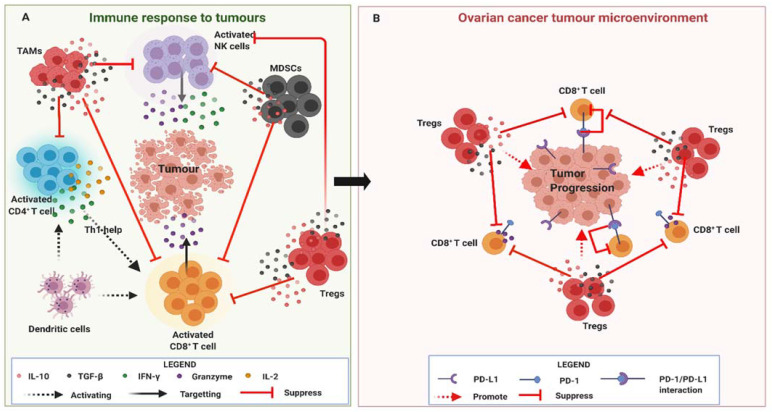Figure 3.
(A)The human immune system harbours various immune cells such as natural killer (NK) cells, CD8+ T cells, CD4+ T helper cells and dendritic cells (DCs) that play an important role in controlling the developing tumour. DCs and CD4+ T cells via IL-2 and INF-γ secretion activate CD8+ cytotoxic T cells (CTLs) and NK cells which then produce toxic molecules such as granzymes that target the developing tumour. However, pro-tumour cells such as regulatory T cells (Tregs), myeloid-derived suppressor cells (MDSCs) and tumour-associated macrophages (TAMs) produce immunosuppressive cytokines (IL-10 and TGF-β) that inhibit CDTLs and NK cells effector responses. (B). The ovarian cancer tumour microenvironment is commonly characterised by high frequencies of infiltrating Tregs and a high Tregs:CD8+ T cell ratio that promotes tumour progression. Ovarian tumour also expresses PD-L1 that further inhibits CD8+ T cell effector responses upon ligation with PD-1. Figure created with BioRender.com.

